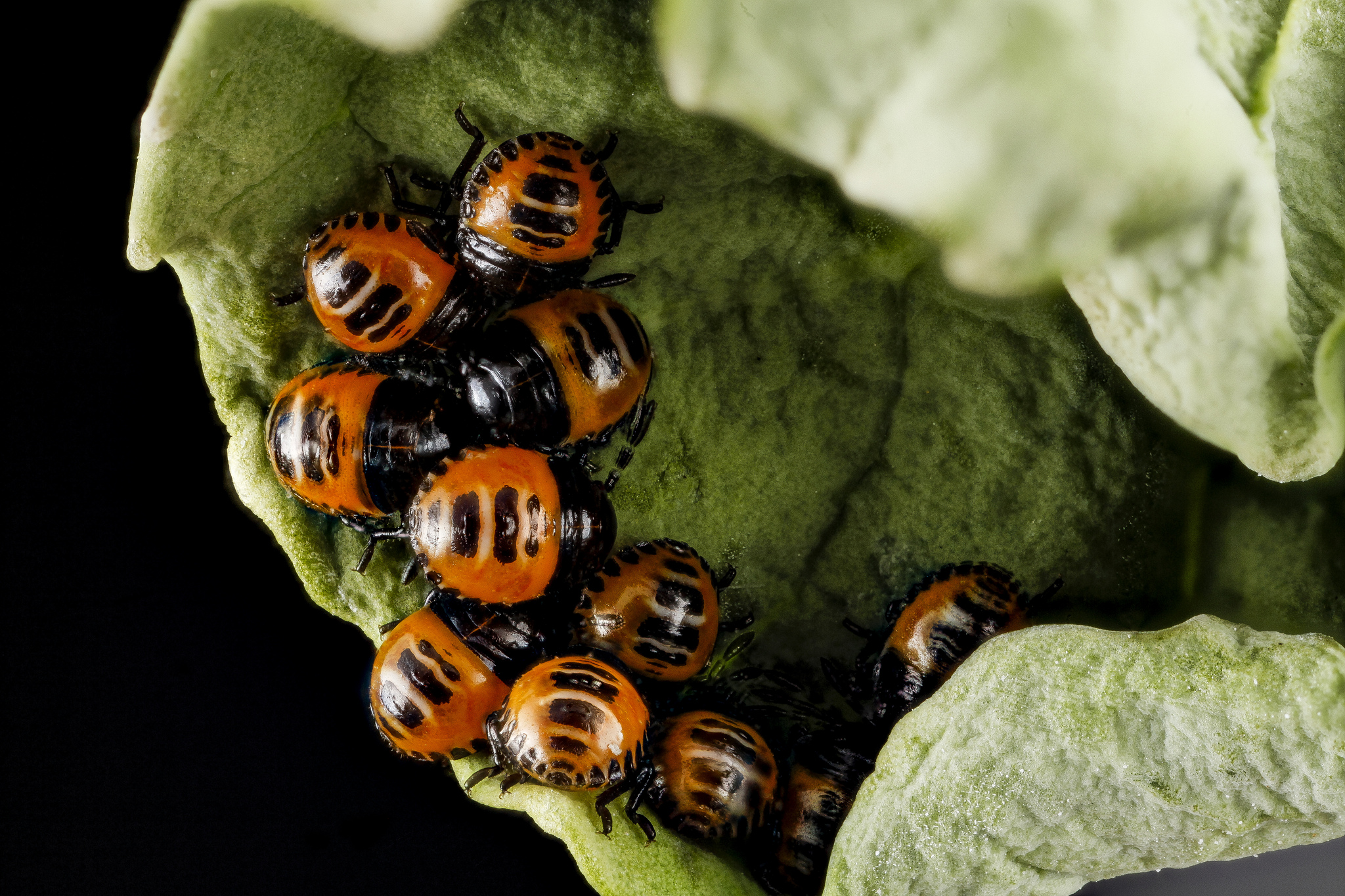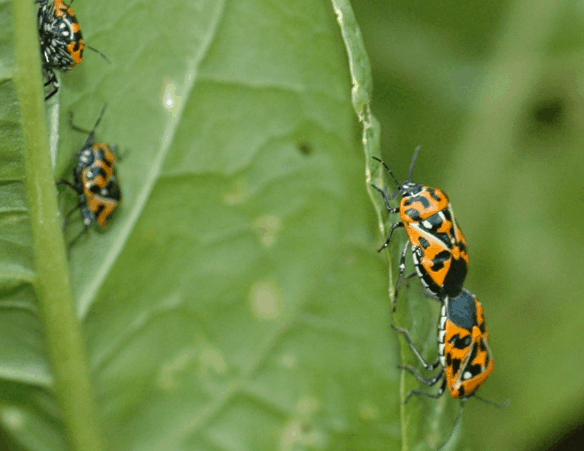
These plants all belong to the mustard family. Popular Brassica plants include cabbage, broccoli, kale, cauliflower, and kohlrabi. It is worth growing at least one mustard plant in the late spring just to get a look at the eggs. The Harlequin Cabbage Bug ( Murgantia histrionica) is the common name of a bug that sucks the juices from Brassica plants and other garden plants. You can see the "hoops," the "cork" in the center, and the "staves" casting a shadow across the top. There are always ten eggs in a bunch, two rows of five side by side, and they look just like little wine barrels or kegs. Their eggs provide another fascinating feature. This bug is telling us "Look, dummy, you are planting these plants in the wrong season?" When planted in the spring or just lasting long, these bugs move in fast. In the fall, these plants mature as the days are getting cooler and shorter, which gives them a better flavor. When planted in the fall, the mustard and cole crops will not bolt and go to seed or turn bitter as fast. Spray manure compost tea, seaweed, molasses, and vinegar (Garrett Juice Formula) from time to time. In northern climates like Pennsylvania, only adult harlequin bugs can survive the winter. In the absence of these favorite hosts, tomato, potato, eggplant, okra, bean, asparagus, beet, weeds, fruit trees and field crops may be eaten. Plant "trap" crops of mustard, turnip greens and the like. Two growers recently reported harlequin bugs rendering kale unmarketable without control. If you are irritated having pretty insect around, plant the cool season crops in the proper season - the fall. It's time to change to heat loving crops. But – they are actually just trying to tell you something. Harlequin bugs feed heavily on all members of the cabbage family, causing light splotches, shriveling and deformity to foliage. Adults hibernate in plant debris and can have multiple generations. Cabbage, broccoli, Brussels sprouts, cauliflower, collards, kale, and kohlrabi, and squash are the main targets, but they will attack other crops.Ĭool season vegetables that have lasted into hot weather commonly welcome this decorative bug.Īdult harlequin bugs are black, shiny, flat and shield-shaped but are nicely decorated in red, orange or yellow. They almost exclusively attack plants that are stressed, usually from being out of their season, especially those cool season crops as the spring weather starts to warm.

They are true bugs, not beetles, and will hurt your plants, but they are actually in the business of helping gardeners. The pretty harlequin bugs are in this category. They damage plants but there's more to the story. Then there is a third category of insects that falls more or less in the middle. Not spoiling this natural pest control is one of the main reasons we don't recommend the toxic chemical pesticides. Nature has an efficient system and balancing act. It's interesting the beneficial predators don't bother other beneficial insects much at all. Others don't harm plants all, just eat pest insects. Some insects show up in the garden and do significant damage to crops.

Print This Page Dallas Morning News - May 21, 2020


 0 kommentar(er)
0 kommentar(er)
